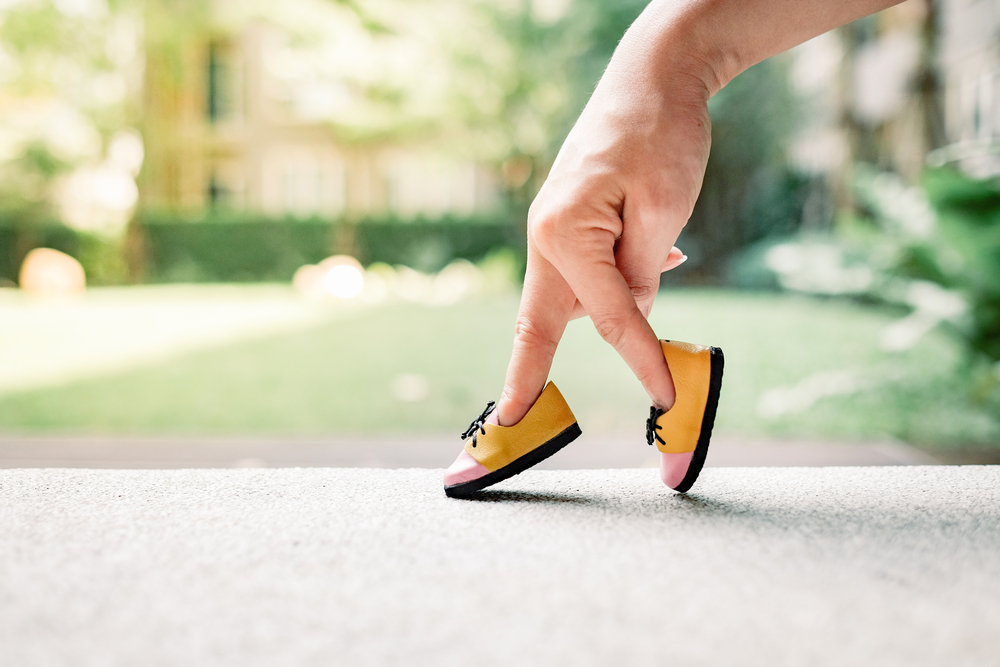Keeping Songs Going in the Head Helps Parkinson’s Patients Walk More Naturally, Study Says
Written by |

Singing a rhythmic tune out loud or, even better, simply listening to it play in your head can help older adults — including those with Parkinson’s disease — to walk more naturally and at a steadier pace, a study reports.
The study, “Mental Singing Reduces Gait Variability More Than Music Listening for Healthy Older Adults and People With Parkinson Disease” was published in the Journal of Neurologic Physical Therapy.
People with Parkinson’s disease tend to walk slower and with less stability than healthy adults of similar age. Lower gait speed is thought to be a consequence of shorter step lengths and decreased step frequency, indicating a decline in overall health.
Listening to music (what scientists refer to as an external auditory cue) is known to help normalize gait speed in Parkinson’s patients. “By creating an external template to which people can align their footfalls, auditory cues impose a walking cadence that, presumably, reduces reliance on defective internal timing mechanisms and increases motivation, thereby increasing walking speed,” the researchers wrote.
External cues essentially set a pace that listeners respond to, restoring a rhythm to their gait and reducing variability.
But it doesn’t always work as intended, the researchers noted. Some studies have found that listening to music can actually increase gait variability in some Parkinson’s patients and older adults, possibly reflecting “the difficulty of synchronizing to an outside source.”
Washington University (WUSTL) researchers previously reported that singing aloud (an internal cue) leads to motor benefits in Parkinson’s patients similar to those in people who did well listening to music (an external cue).
This team now set out to determine whether singing aloud without music or singing to oneself mentally could elicit similar gait improvements as listening to music, reasoning that such an internal cue “utilizes vocal-motor coupling to match one’s movement to one’s own voice,” they wrote.
A total of 60 people, 30 men and 30 women, were included in the study. Half were diagnosed Parkinson’s patients and the other half were healthy older adults serving as controls. Patients (all tested in an “on” state of medication) had a mean age of 65.8, and controls a mean age of 64.9.
Participants walked under three distinct test conditions: listening to music, or singing aloud without music and singing mentally. All three tests were also performed at three different tempos: at the person’s preferred walking speed (cadence), 10% slower, and 10% faster.
“All conditions were cued using an instrumental version of ‘Row, Row, Row your Boat’ designed with a salient beat that could be readily detected by participants. Everyone was familiar with the lyrics and melody of the song and able to sing it without difficulty,” the researchers wrote.
As expected, Parkinson’s patients walked slower, took shorter steps, and had higher levels of gait variability and asymmetry that did healthy adults.
Both controls and patients showed a better walking performance with mental singing, with benefits similar to those triggered by external cues. “However, only internal cues elicited improvements in gait variability as well,” the researchers wrote.
In their earlier work, these researchers showed that singing aloud generally lowered gait variability measures in ways that compared with externally generated cues. This time around, they found that singing to yourself mentally elicited even greater reductions in variability than overt singing.
Walking at a faster than the usual pace — prompted by a faster tempo — was also associated with improved velocity and lesser gait variability in both groups. “Variability decreases were more substantial during mental singing at tempos at or above preferred cadence,” the researchers wrote.
“[M]ental singing provides more benefit to gait variability than singing aloud, which makes internal cueing more practical for everyday use,” they concluded, adding that optimizing the use of internal cues to aid movement “is an important step toward more effectively meeting the needs of people with gait disorders related to aging or neurological disease.”





